Now and again someone recommends a business book to me since I seem to have found myself running a business. Invariably, I quickly realize the author has a 5 page idea based solely on his intuition, no real data, and an extra 200 pages of filler so it can be sold in bookstores. But for the first time I can remember, I’ve been reading a business-oriented book with a substantial, interesting thesis and I think it might apply to education as well.
There’s now a lot of evidence that students learn many things better if they are active participants in their learning, rather than passively taking in information. Though this is old news, the majority of biology classes are still taught exclusively with straight lectures and textbooks. In Crossing the Chasm, Geoffrey Moore provides a description of a major stumbling block for the spread of technology innovations which I think might apply to such educational practices as well.
Say a company comes along with a whiz-bang new gadget. Early on, a group of technologyvisionaries will see its potential and take the risk of adopting it. As the gadget proves its usefulness, a much larger mainstream audience starts to adopt it. But between the visionaries and the mainstream is what Moore calls a marketing “chasm” that the gadget must cross. The mainstream audience is adopting for very different reasons than the visionaries were, and if the gadget is marketed only to early adopters, the mainstream will never pick it up and the gadget will eventually die out.
Biology education and teaching innovations are not generally thought of in terms of “marketing” and “sales”, but educators do think in terms of “distribution”. In fact one of the key things reviewers look for on National Science Foundation grant panels is the distribution plan in the grant – if NSF funds the project, they want to know the results will be distributed to a wide audience. As I see it, this is just another word for marketing. In general, NSF-funded projects do a very poor job of this – just peruse the list of projects they’ve funded and ask yourself how many (even in your field) you’ve ever tried, let alone used in a class.
According to Moore, one of the main strategies for crossing the chasm from early adopters to the mainstream is to provide a “whole product”. What this means is that you deliver not just the innovation (say, educational simulation software in our case), but all the ancillary pieces that make it easy for a new user to adopt. We did this with our SimUText Ecology chapters, although we didn’t know we were doing something which had a name. For instance, we’ve spent a lot of time on an Instructor Portal where instructors can quickly and easily see student work on each chapter, we’ve built a good support structure to handle any student technical issues, we provide powerpoint slides to accompany the chapters, introductory workshops to familiarize instructors with the system, and a host of other features and supports. None of these are the core innovation of SimUText Ecology, but they make it easy to use for an instructor, and maximize the positives that comes from using SimUText (better learning and more student interaction) while minimizing negatives.
While NSF and other organizations (like us) who are developing teaching materials will have to pay much more attention to this chasm if they want their materials widely used, I think the chasm idea applies equally to teaching approaches. The straight lecture + textbook style will remain the mainstream approach to teaching college (and high school) biology until a better approach can cross the chasm. Just as with a product, I bet more effective science teaching approaches will not cross over to the mainstream until they are somehow packaged into “whole products” that an instructor can easily adopt.







